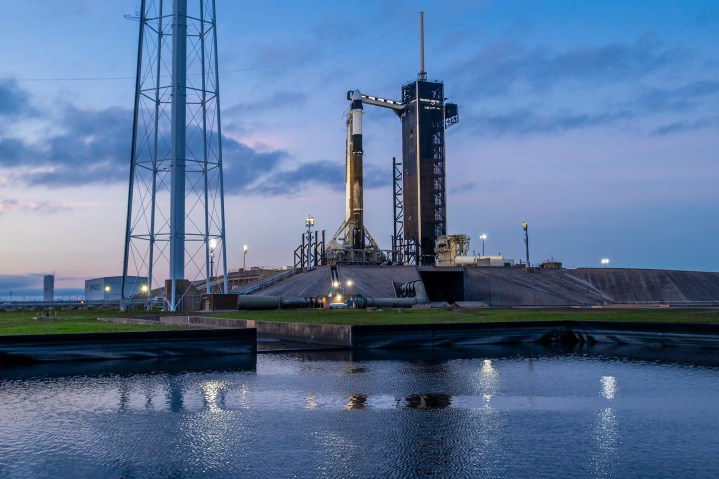
NASA’s third private launch to the International Space Station (ISS) has been moved from Wednesday to Thursday to give SpaceX more time to complete pre-launch checkouts and data analysis on the Falcon 9 rocket and Crew Dragon capsule.
The Axiom-3 mission, organized by Texas-based Axiom Space, was originally set to get underway on Wednesday afternoon, but earlier in the day, SpaceX announced it was delaying launch from the Kennedy Space Center in Florida by about 24 hours.
If the new schedule holds, SpaceX’s Falcon 9 rocket will blast off the launchpad at 4:49 p.m. ET (1:49 p.m. PT) on Thursday. The early stages of the mission, as well as the crew’s arrival at the ISS early on Saturday morning, will be live-streamed. Digital Trends has all the information you need to watch the broadcast.
The Axiom-3 crew members are European Space Agency project astronaut Marcus Wandt of Sweden; commander Michael López-Alegría, a dual citizen of both the U.S. and Spain; pilot Walter Villadei of Italy; and mission specialist Alper Gezeravcı of Turkey. López-Alegría and Villadei have been to orbit before, but it’s the first such trip for Wandt and Gezeravcı.
During their time aboard the orbital outpost, the Axiom-3 crew will live alongside the current seven-person crew, conducting more than 30 science experiments and participating in more than 50 outreach events via video link with various groups and organizations back on Earth.
It will be the first crewed launch from U.S. soil since SpaceX’s Crew-7 mission, which got underway in August 2023.
This is Axiom Space’s third privately funded mission to the space station following launches in April 2022 and May 2023, and it will be the first all-European private astronaut mission heading to space.
The weather on the Space Coast is looking good for Thursday, so barring any last-minute technical issues, the crew should get away as planned. If you’re planning to check out the live stream, be sure to keep an eye on SpaceX’s social media feed for any changes to the launch schedule between now and then.
Editors' Recommendations
- SpaceX’s Falcon 9 rocket just completed a milestone mission
- SpaceX all set for a record-breaking rocket launch on Friday
- SpaceX shares awesome rocket imagery from Starship flight
- SpaceX’s mighty Starship rocket stacked for 3rd test flight
- How to watch homecoming SpaceX astronauts fly overhead on Tuesday


